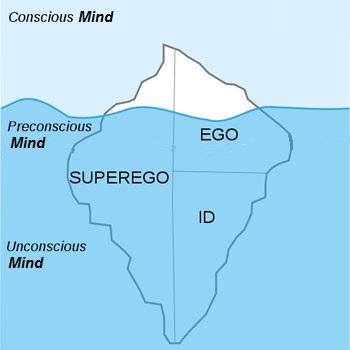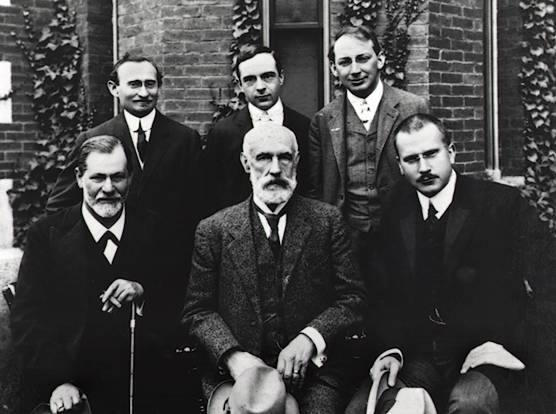Psychodynamic Theory - Theory, Approach, Definition and Psychoanalytics
Tweet
Psychodynamic theory is viewpoint in the field of Psychology which tries to explain personality based on conscious and unconscious forces. This theory was originally proposed by Sigmund Freud. He in his paper wrote that the typical personality of an individual can be split into three things - id, Ego and superego. Here id means the traites which targets instincts and pleasure-seeking. Superego refers to trait due to which we tend to obey the rules of parents and society and the third thing is ego which is the intermediary trait trying to balance other traits. It closely links with psychoanalysis as well. There are many other theories such as behavioral and humanist theories.
Psychodynamic psychotherapy is derived from psychoanalysis and is based on a number of key analytical concepts. These include Freud's ideas about psychosexual development, defence mechanisms, free association as the method of recall, and the therapeutic techniques of interpretation, including that of transference, defences and dreams. Such therapy usually involves once-weekly 50-minute sessions, the length of treatment varying between 3 months and 2 years. The long-term aim of such therapy is twofold: symptom relief and personality change.
Psychodynamic psychotherapy is classically indicated in the treatment of unresolved conflicts in early life, as might be found in non-psychotic and personality disorders, but to date there is a lack of convincing evidence concerning its superiority over other forms of treatment.
Psychodynamic Theory is based on the premise that human behavior and relationships are shaped by conscious and unconscious influences.
Psychodynamic therapies, which are sometimes used to treat depressed persons, focus on resolving the patient's conflicted feelings. These therapies are often reserved until the depressive symptoms are significantly improved.
Psychodynamic counselling places more emphasis on the influence of past experience on the development of current behaviour, mediated in part through unconscious processes. It is influenced by object relations theory, that is, by the idea that previous relationships leave lasting traces which affect self-esteem and may result in maladaptive patterns of behaviour.
In psychodynamic therapy, the patient (as opposed to the client in other types of therapy) talks, and the therapist makes interpretations about the patient's words and behaviors. Dream interpretation may be a part of psychodynamic therapy. As with other types of therapy, some psychodynamic therapists may utilize other methods of therapy such as cognitive-behavioral techniques for specific problems.
Key Concepts of Freuds Psychodynamic Theory

Psychodynamic Psychology as compared to behavioral psychology is quite different and opposite. It challenges the conventional scientific outlook and concentrate on inner feelings of an individuals while he or she is handling relationships and different experiences.
1. Primarily concerned with internal psychological processes
2. Importance of early childhood experiences
3. Existence of unconscious motivation
4. Existence of ego (rationality) & superego (morality)
5. Existence of defense mechanisms
Psychoanalysis and Psychodynamic Perspective
The term psychodynamic refers to a wide group of theories that emphasize the overriding influence of instinctive drives and forces, and the importance of developmental experiences in shaping personality. Early in their development, these theories focused solely on the influence of unconscious drives and forces, but they received much criticism and subsequent revision. Most recent psychodynamic theory places greater emphasis on conscious experience and its interaction with the unconscious, in addition to the role that social factors play in development.
Psychodynamic theories are in basic agreement that the study of human behaviour should include factors such as internal processes, personality, motivation and drives, and the importance of childhood experiences. Classic theories about the role of the unconscious sexual and aggressive drives have been re-evaluated to focus on conscious experience, resulting in, for example, the birth of ego psychology.
In this unit, students will study the historical development of this perspective and become aware of the revisions of classical psychodynamic theory.
Psychoanalytic and Psychodynamic Confusion
Psychodynamic and Psychoanalytic are often confused among each other and often they are used interchangeably. Freud’s theories were psychoanalytic, and the term psychodynamic includes both Freud's theories as well as that of his followers, e.g. Jung (1964), Adler (1927) and Erikson (1950).
Psychodynamic Treatment
Two pioneers of psychodynamic treatment were Joseph Breuer and, of course, Sigmund Freud. Breuer was a proponent of using hypnosis in order to help the patient to reach a catharsis. Freud, who collaborated with Breuer in developing this school of treatment, did not believe that hypnosis was necessary in order to reach the stage of catharsis. Freud instead relied on a method of talk therapy known as free association.
For Freud, whose methods of treatment became known as psychoanalysis, catharsis was neither the only nor the ultimate goal of therapy. Rather, through such methods as free association and dreams, one could garner great insight into aspects of the unconscious. Insight, which Freud believed sufficient for curing the disorder, was reached through the tool of interpretation. Through interpretation, the analyst is able to bring hidden meaning to past events in order to enlighten the patient but must face resistance produced by the defense mechanisms of the individual.
The goal of the analyst, however, is not to eliminate these defense mechanisms, which are essential for normal functioning, but to replace unhealthy ones with more adaptive, functional systems. Psychoanalysis also attempts to help the patient become aware of his or her basic psychological needs and drives, and devise healthy ways to achieve them.
Other Psychodynamic Theorists
Psychodynamic Theory has many forms which are beyond those discussed. Some of these are described as neo-Freudians which retained many of the concepts as conceptualized by Freud. Among these are:
- The Ego psychology school pioneered by Freud's daughter Anna, which focusses on the strategies used to preserve the ego, especially defense mechanisms.
- Object relations school which emphasizes the importance of relationships, especially to the mother in early childhood includes a number of theorists, including Melanie Klein, Donald Winicott, and John Bowlby.
- Other psychodynamic theorists diverged significantly from the Freudian tradition even some who were trained originally in psychoanalysis, like Karen Horney, Erik Erikson and Erich Fromm.
Psychodynamic Approach Assumptions
- All our actions and behavior often have some unconscious motives behind.
- Our childhood experience has a lot to contribute towards our behaviour and feelings as adults.

HI, I am trying to get information on the PSychodynamic theory for a term paper. This is very confuising because idid not realize it covered so much. Please help. - Mary McCarty

Sometimes crying or laughing
are the only options left,
and laughing feels better right now.

Current Issue
 Self Help Leaflets Take the help of our self help leaflets or booklets. |
 The DG Magazine All about living with depression |
Most Read on Treatments
Medication Treatment for Depression
Herbal treatment for Depression
St. John's Wort5HTP
Ginkgo Biloba
Natural treatment for Depression
Exercise or YogaMeditation or Prayer
Clarocet NRI
Alternative treatment for Depression
AromatherapyVitamins
Diet and depression












